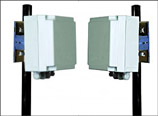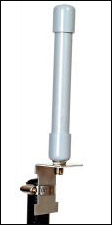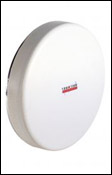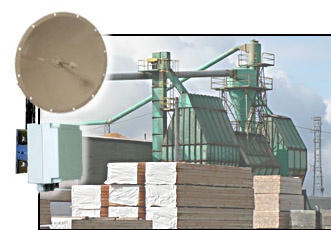

711 Summer Street, Eureka, California 95501 Phone 800-227-1768 Fax 707-443-2418
email: video@redwoodelectronics.com

Wireless Video Transmission
Antennas - External High GainDesigned to connect to your VideoComm Technologies 5.8GHz video/audio receiver, this series of specialty antennas allow you to match the antenna to your specific application.
|
|
Advantages of Wireless Video Transmission
Features:
What You Need to Know About Wireless Video Applications Line of Sight! It must be line of sight between the transmitter and receiver. The signal will, however, penetrate to a limited degree through wooden walls, brick, drywall, and plain glass, but the signal will be attenuated.Signal Blockers Steel or anything with steel in it i.e., steel reinforced concrete (rebar), machine centers, metal buildings, energy saving foil on insulation within wooden walls, and metallic paints, to name a few. High Voltage power lines may look small but they may as well be 8’ in diameter.Water or anything with a high water content i.e., trees and foliage. Even rain and snow can have some effect that should be considered in choosing equipment. What is a good line-of-site pathway? Not only is a clear, unobstructed view necessary, there shouldn’t be any objects such as buildings or roofs in the nearby pathway. The radio waves coming from the RETCO5808 system antennas do not shoot out like a finely directionalized laser, rather they radiate like a flashlight beam. They can reflect off the surfaces of nearby objects to the line-of-sight pathway and arrive at the receiver as a disbursed, multipath signal, thereby cutting back the reception.A good rule of thumb is to “give them some air” by mounting them at least 15 to 20 feet above or away from obstructions, like the roof or side of a building. For an ideal application, look at the pathway as a spacious tube to transmit through with no obstructions anywhere in the tube. To attain an appropriate line-of-sight pathway the transmitter can be mounted at the camera source or many hundreds of feet away via a wired interconnect. The same holds true between the wireless receiver and the monitor, DVR, etc., consequently allowing more freedom for positioning. How to send a signal around or over a large unmovable obstruction. The transmitter can send the signal to a receiver, for example, on the top of a building (obstruction). Then the receiver can be hard-wired to a second transmitter on the other side of the structure and rebroadcast (on a different frequency) to the second receiver at the final destination.Antennas The transmitter power and antenna gain is limited by law. For the transmitter, however, you can choose between an omnidirectional or directional antenna.The omnidirectional type, as on a RETC5808, has a 360 degree coverage and blankets the surrounding area. The directional antenna on a RETCO5808, on the contrary, goes farther because it is more focused to an approximate 25 degree spread. It is the choice of a receiver antenna that mainly determines the distance capabilities of a system. They, too, come in both omnidirectional and directional models with gains from 3 to 29dB. A directional antenna receives farther depending on its gain, but as the gain increases the line-of-sight gets more precise in alignment. Note: If a receiver is installed on a moving loader (or other rolling stock) it will need an omnidirectional antenna although it will be limited to the 25 +/- degrees signal area of the transmitter. It is advisable to estimate the distance required for the system then go to the next larger receiver antenna to compensate for things like heavy rain or snow. Could wireless video help solve a difficult video distribution problem at your location? If so, |






